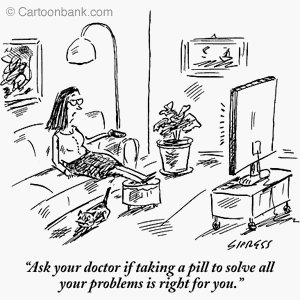 “Selling sickness” means that the line between healthy and sick becomes blurred – and demand for medical treatment increases. If you’re a drug company, it’s a swell way to get consumers to demand treatment that may or may not even be necessary. So says a Dutch study that investigated industry-funded information campaigns around common conditions like restless legs syndrome, overactive bladder and heartburn.
“Selling sickness” means that the line between healthy and sick becomes blurred – and demand for medical treatment increases. If you’re a drug company, it’s a swell way to get consumers to demand treatment that may or may not even be necessary. So says a Dutch study that investigated industry-funded information campaigns around common conditions like restless legs syndrome, overactive bladder and heartburn.
These “ask your doctor” campaigns focused on symptom advertising or disease mongering.
Dutch law, as in Canada (but not, significantly, in only two countries: the U.S. and New Zealand) prohibits “Direct To Consumer” public advertising of prescription drugs. You might well wonder why these two countries are the only ones on earth who still permit this marketing practice. Continue reading



